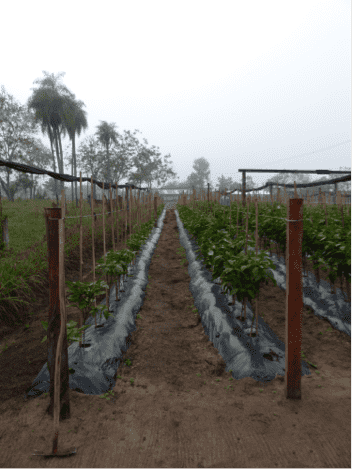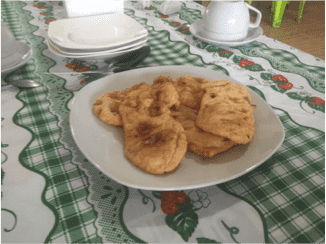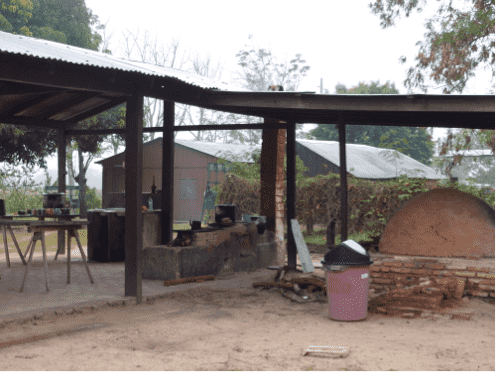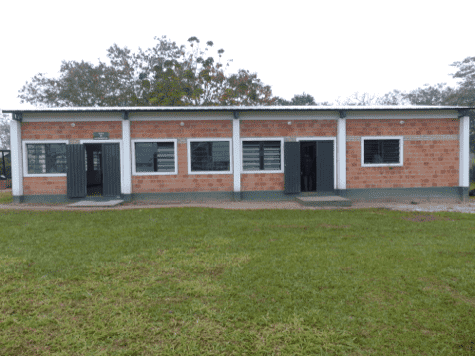This blog post comes from Roxana Newton of the Whole Planet Foundation Field Team. Roxana is the Program Manager for Latin and North America. She visited Paraguay in the summer of 2016.
In 2015, our microfinance partner in Paraguay, Fundación Paraguaya, won Whole Planet Foundation’s microfinance organization of the year. When I had the opportunity to visit them this year, I was impressed not only by the lending program, but also its agricultural education program.
Fundación Paraguaya has three schools: San Pedro, San Francisco and Bethlehem. We visited the school in San Pedro primarily because Fundación Paraguaya decided to use the prize money they received from Whole Planet Foundation to build a dining hall and kitchen for their students.
Before: Kitchen & dining space
After: Kitchen and dining space
Each school’s program is different, however, the objective is the same: to provide an opportunity to low-income students to acquire the skills and knowledge to overcome poverty. In San Pedro, the students’ ages range from 15-19, and for the most part all are extremely poor. Each student pays $10 a month to attend school – this includes room and board. Most of the students go for months without visiting their parents because bus passes are too expensive.
 The San Pedro program is a two-year program and focuses on business and agricultural skills. They do have formal classes, but much of the work is practical. Their model is “learning by doing, selling and winning.” Students participate in the entire production cycle and marketing and selling of a product. They learn how to farm, take care of livestock, and how to package & market the goods they produce and raise.
The San Pedro program is a two-year program and focuses on business and agricultural skills. They do have formal classes, but much of the work is practical. Their model is “learning by doing, selling and winning.” Students participate in the entire production cycle and marketing and selling of a product. They learn how to farm, take care of livestock, and how to package & market the goods they produce and raise.
With the produce and chickens they raise, the students work with instructors to establish a client base in the community (individuals and commercial). The school uses the profits to cover its operational expenses. At the time of the visit, the San Pedro School was about 30% self-sufficient, but they hope to reach 100% in a few years. This would mean the students and teachers would have to sell at least $140,000 worth of products annually.
[Photo: The garden at the San Pedro School. They are in the midst of expanding it in order to produce more crops.]
At the end of the program, each student must present and defend a business plan. The goal is that each student can graduate from the program and start his or her own business. Furthermore, they receive the opportunity to apply for a loan through Fundación Paraguaya’s microlending program.
Local Recipe: Paraguayan Tortillas
While we were visiting the school, some of the students were preparing tortillas for the morning snack. It was the first time I tasted a Paraguayan tortilla. It is very different from the tortillas I have eaten in the past (Mexican and Spanish), but just as delicious. If you are interested in trying it, check out the recipe we received from the school’s chef (this recipe is for 30 portions, so feel free to halve it)!
time I tasted a Paraguayan tortilla. It is very different from the tortillas I have eaten in the past (Mexican and Spanish), but just as delicious. If you are interested in trying it, check out the recipe we received from the school’s chef (this recipe is for 30 portions, so feel free to halve it)!
Ingredients:
5 eggs
1/4 liter of milk
2 kilos of flour
300 grams of grated queso fresco
Green onionsSalt to taste
Process:
In a large bowl beat the eggs and add the milk. Beat well and then add the flour; mix until the dough is smooth. Stir in the salt, green onions and cheese.
Add oil to a skillet. When hot, add small portions of the dough and cook until both sides are brown. Other recipes call for frying the dough, baking it in the oven or cooking it on a griddle like pancakes!


